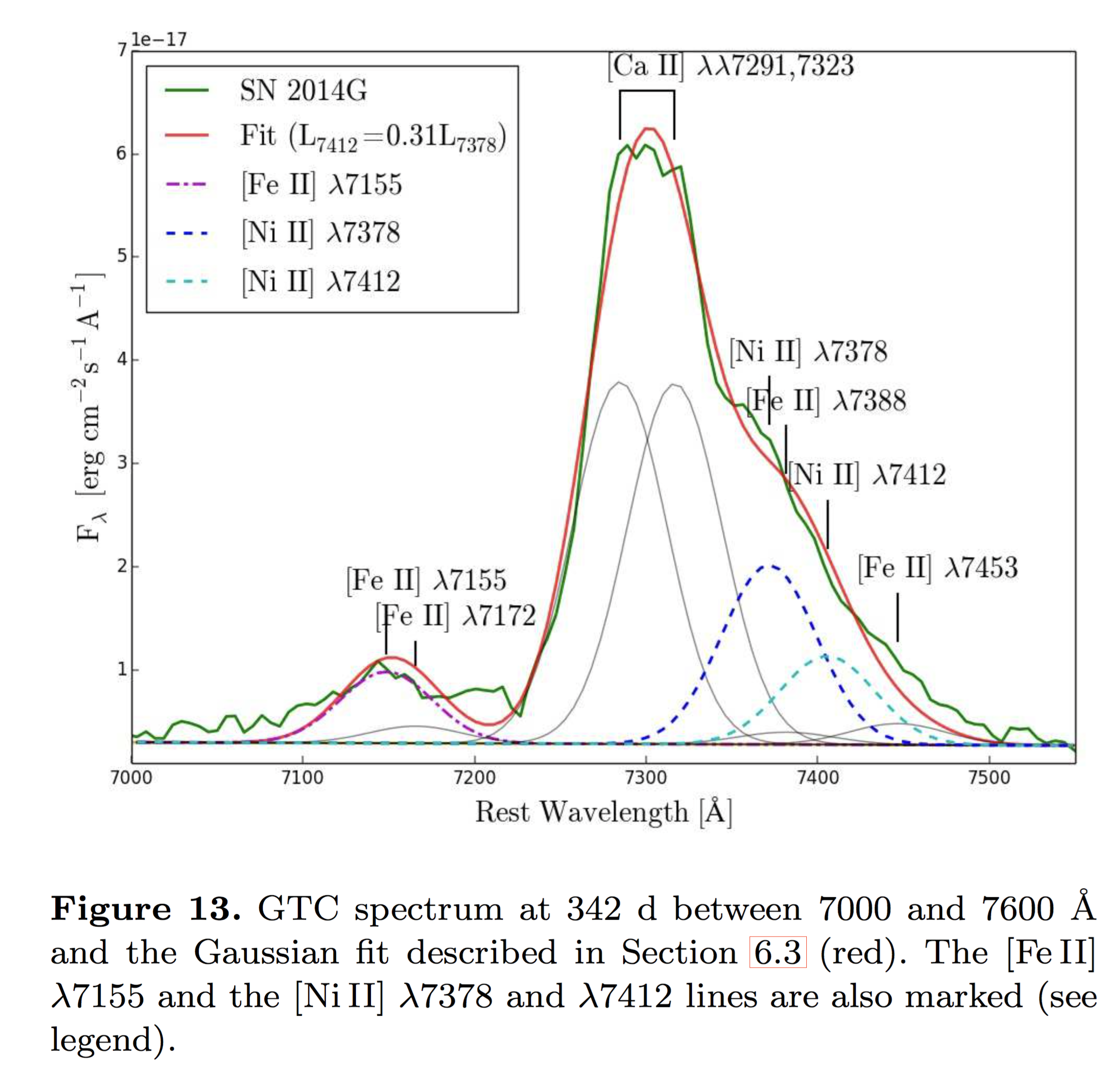Padova-Asiago Supernova Group
Highlights
The multi-faceted Type II-L supernova 2014G from pre-maximum to nebular phase
Terreran, G. et al 2016 MNRAS 462,137 (link to pdf)
We present multi-band ultraviolet, optical, and near-infrared photometry, along with visual-wavelength spectroscopy, of supernova (SN) 2014G in the nearby galaxy NGC 3448 (25 Mpc). The early-phase spectra show strong emission lines of the high ionisation species He II/N IV/C IV during the first 2-3 d after explosion, traces of a metal-rich CSM probably due to pre-explosion mass loss events. These disappear by day 9 and the spectral evolution then continues matching that of normal Type II SNe. The post-maximum light curve declines at a rate typical of Type II-L class. The extensive photometric coverage tracks the drop from the photospheric stage and constrains the radioactive tail, with a steeper decline rate than that expected from the $^{56}$Co decay if $\gamma$-rays are fully trapped by the ejecta. We report the appearance of an unusual feature on the blue-side of H$\alpha$ after 100 d, which evolves to appear as a flat spectral feature linking H$\alpha$ and the O I doublet. This may be due to interaction of the ejecta with a strongly asymmetric, and possibly bipolar CSM. Finally, we report two deep spectra at ~190 and 340 d after explosion, the latter being arguably one of the latest spectra for a Type II-L SN. By modelling the spectral region around the Ca II, we find a supersolar Ni/Fe production. The strength of the O I $\lambda\lambda$6300,6363 doublet, compared with synthetic nebular spectra, suggests a progenitor with a zero-age main-sequence mass between 15 and 19 M$_\odot$. 78
Terreran, G. et al 2016 MNRAS 462,137 (link to pdf)
We present multi-band ultraviolet, optical, and near-infrared photometry, along with visual-wavelength spectroscopy, of supernova (SN) 2014G in the nearby galaxy NGC 3448 (25 Mpc). The early-phase spectra show strong emission lines of the high ionisation species He II/N IV/C IV during the first 2-3 d after explosion, traces of a metal-rich CSM probably due to pre-explosion mass loss events. These disappear by day 9 and the spectral evolution then continues matching that of normal Type II SNe. The post-maximum light curve declines at a rate typical of Type II-L class. The extensive photometric coverage tracks the drop from the photospheric stage and constrains the radioactive tail, with a steeper decline rate than that expected from the $^{56}$Co decay if $\gamma$-rays are fully trapped by the ejecta. We report the appearance of an unusual feature on the blue-side of H$\alpha$ after 100 d, which evolves to appear as a flat spectral feature linking H$\alpha$ and the O I doublet. This may be due to interaction of the ejecta with a strongly asymmetric, and possibly bipolar CSM. Finally, we report two deep spectra at ~190 and 340 d after explosion, the latter being arguably one of the latest spectra for a Type II-L SN. By modelling the spectral region around the Ca II, we find a supersolar Ni/Fe production. The strength of the O I $\lambda\lambda$6300,6363 doublet, compared with synthetic nebular spectra, suggests a progenitor with a zero-age main-sequence mass between 15 and 19 M$_\odot$. 78
